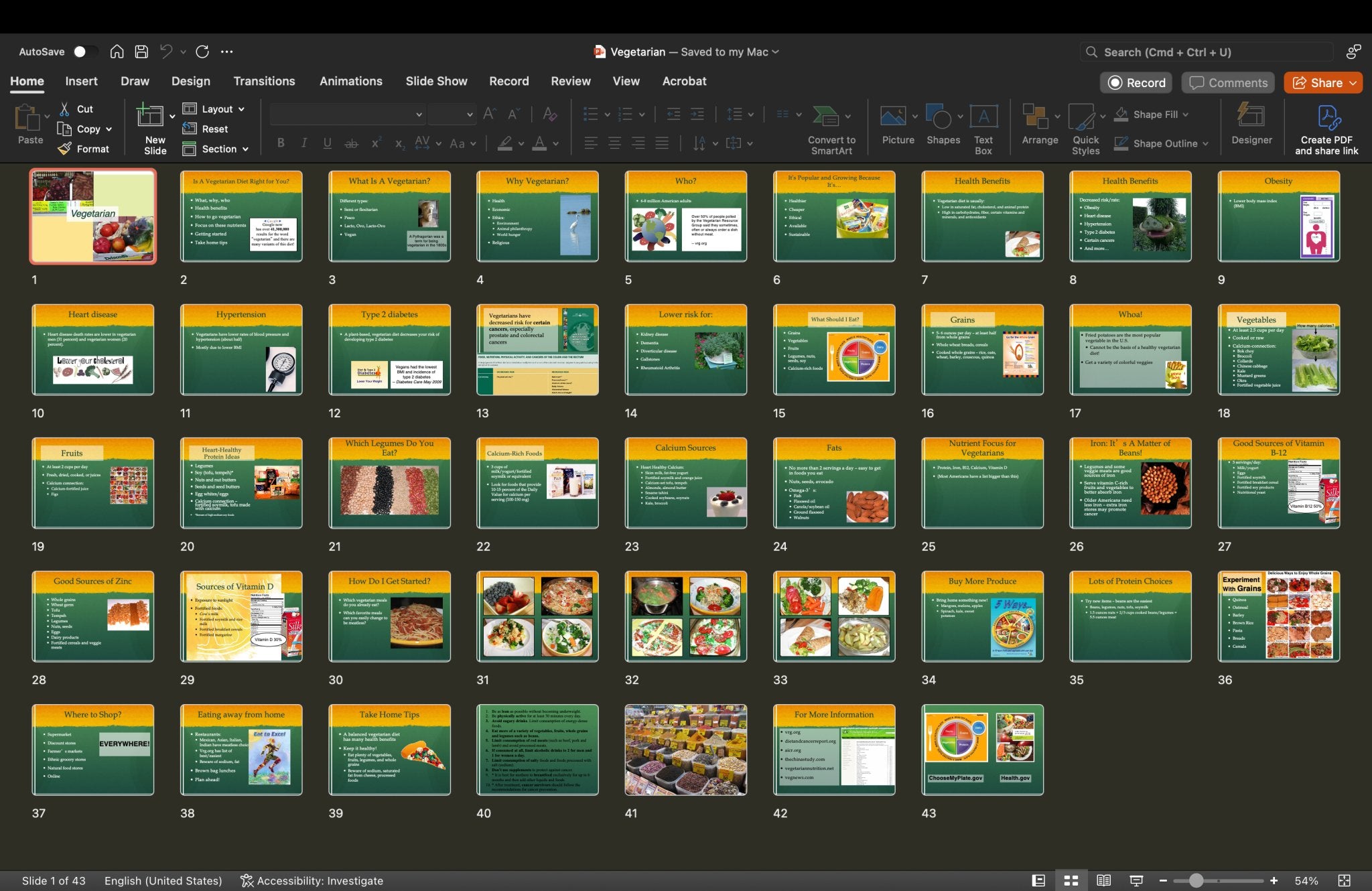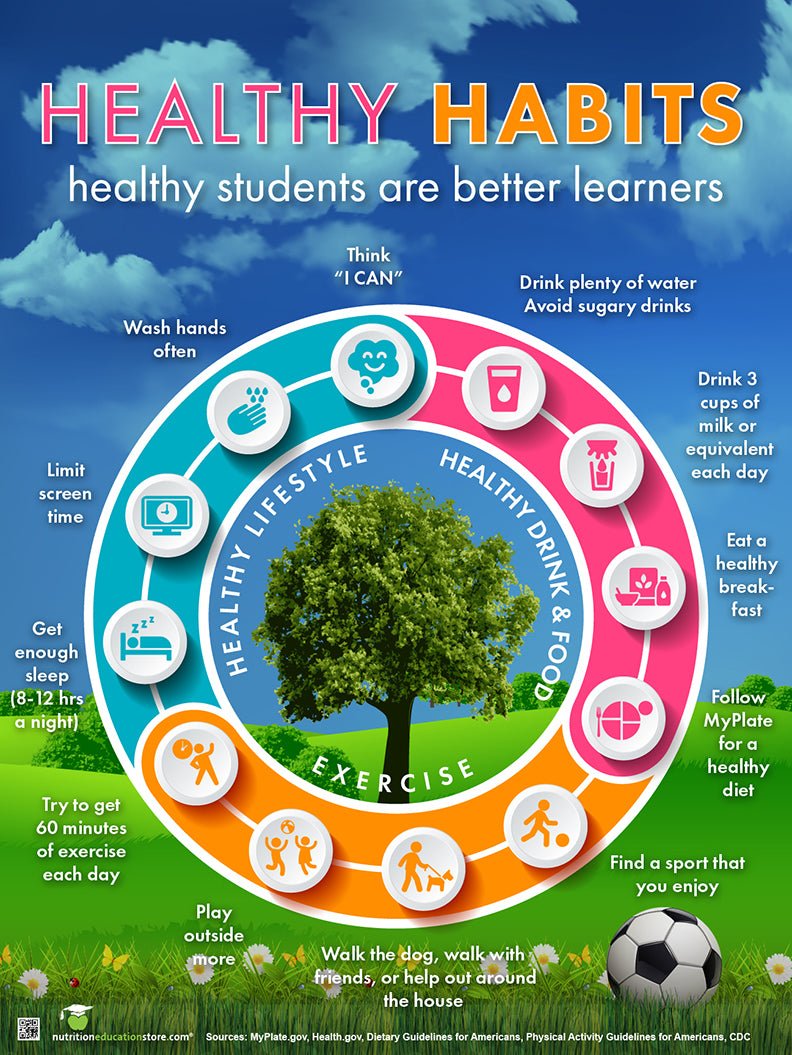How many of your clients or students say they follow a vegetarian or plant-based eating pattern – and think they’re eating healthfully – when in reality, they’re just consuming lots of non-meat processed foods?
Healthy plant-based and vegetarian eating patterns are about more than opting for the Impossible Burger with fries. To be healthy, this way of eating has to be centered on a variety of vegetables, fruits, nuts, seeds, legumes, and whole grains.
Teach your clients or students everything they need to know with our Vegetarian and Plant-Based Diet for Better Health PowerPoint show.
Who needs this presentation?
- Students, from middle school through college, especially if they’ve decided to be vegetarian.
- Adults, especially those who are newly diagnosed or hoping to prevent diet-related chronic diseases like diabetes and heart disease.
- Anyone who wants to eat more plants or try more meatless meals.
Items in our Plant-Based theme go well with the Vegetarian and Plant-Based Diet for Better Health PowerPoint show. You could put up posters (like the Plant Slant) or a bulletin board display featuring plant-based recipes that people can take with them (or they can take a picture with their cell phone).
By Hollis Bass, MEd, RD, LD












